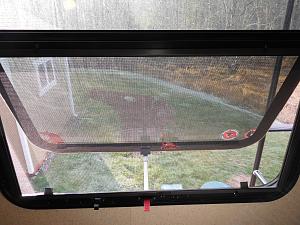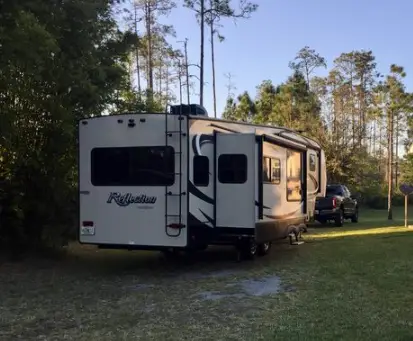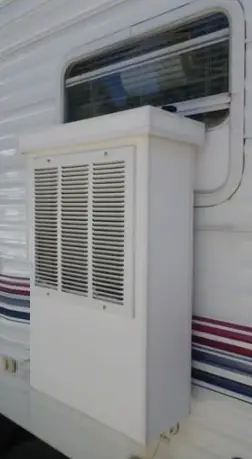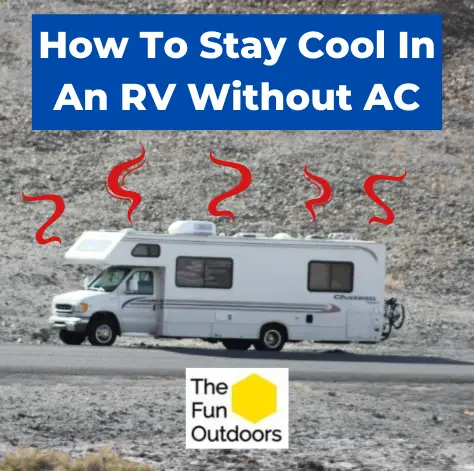Staying cool in an RV without air conditioning during the hot summer months can be a challenge. Fortunately, there are several tips and tricks that can help keep the interior of your RV comfortable and cool. By following these simple guidelines, you can enjoy your summer travels without feeling uncomfortable or overheated.
Different ways to stay cool in an RV without AC include parking in the shade whenever possible, creating a cross-breeze by opening doors and windows, and keeping blinds closed during the day. These are just a few of the many tips and tricks that can help you stay cool and comfortable in your RV during the hot summer months.
We’ll cover everything you need to know to make sure you stay nice and cool in your RV during your next warm weather trip in this guide.
Maximizing Airflow

When it comes to staying cool in an RV without air conditioning, maximizing airflow is key. This means creating a steady flow of fresh air throughout the RV to keep it from getting stuffy and hot. There are a few ways to maximize airflow, including opening windows and doors and creating a cross-breeze with fans.
Open Windows and Doors
One of the simplest ways to increase airflow in an RV is to open windows and doors strategically. This means opening windows on opposite sides of the RV to create a cross-breeze. It’s also important to consider the placement of the windows. Windows facing the shade should be opened, while those facing the sunlight should be closed to keep warm air out and cool air in.
Another option is to use roof vents and skylights to increase ventilation. These can be opened to allow hot air to escape and fresh air to enter. Keep in mind that opening too many vents at once can create a draft and make the RV feel colder than desired.
Create Cross-Breeze with Fans
Fans are another effective way to increase airflow in an RV. Placing a fan facing outward in a window can help push hot air out of the RV, while placing a fan facing inward can help bring cool air in. For maximum effectiveness, it’s recommended to use multiple fans to create a cross-breeze.
Another option is to use a portable evaporative cooler, also known as a swamp cooler. These coolers use significantly less energy than air conditioning units and can offer relief similar to fans. They work by passing hot air through water and creating cool water vapors.
Minimizing Heat Gain

When it comes to staying cool in an RV without air conditioning, minimizing heat gain is key. Here are some effective ways to do just that.
Park in the Shade
One of the easiest ways to minimize heat gain in an RV is to park in the shade. Look for campsites with plenty of trees or other natural shade sources. If you can’t find natural shade, consider bringing along an awning or other shade structure to set up outside your RV.
Use Reflective Window Shades
Another way to minimize heat gain is by using reflective window shades. These shades help to reflect the sun’s rays away from your RV, keeping the interior cooler. Look for shades made from materials like Reflectix for maximum effectiveness.
Use A Heat Reflective RV Roof Coating
If you’re serious about minimizing heat gain in your RV, consider applying a heat reflective roof coating. These coatings are designed to reflect the sun’s rays away from your RV, keeping the interior cooler. Look for coatings made from materials like ceramic or aluminum for maximum effectiveness.
Insulate the RV
Insulating your RV is another effective way to minimize heat gain. Look for insulation materials like Styrofoam or fiberglass and make sure to insulate all areas of your RV, including walls, floors, and ceilings.
Change Your RV Light Bulbs to LEDs
Finally, consider changing your RV light bulbs to LEDs. LED bulbs produce less heat than traditional incandescent bulbs, which can help keep the interior of your RV cooler. Plus, they use less energy, which can help you save on your electric bill.
RV Cooling Strategies

Staying cool in an RV during the summer months can be challenging, especially if you don’t have air conditioning. Fortunately, there are several strategies you can use to keep cool and comfortable. Here are some tips:
Cook Outside
Cooking inside an RV can generate a lot of heat, which can make the space feel even hotter. Instead, consider cooking outside on a portable grill or camp stove. This will not only keep the heat outside but also give you a chance to enjoy the fresh air and scenery.
Use Ice and Wet Cloths
Placing ice packs or wet cloths on your neck, wrists, and feet can help you cool down quickly. You can also put a wet cloth on your forehead or the back of your neck to help regulate your body temperature.
Use Lightweight Bedding
Switching to lightweight bedding, such as cotton sheets and a summer weight comforter, can help you stay cool at night. You can also consider using a cooling gel mattress topper to keep your bed cool and comfortable.
Take Lukewarm Showers Instead of Hot Ones
Taking a hot shower can raise your body temperature and make you feel even hotter. Instead, opt for a lukewarm shower or take a dip in a nearby lake or pool to cool off.
Cool Down Your Neck, Wrists, and Feet
Your neck, wrists, and feet are the areas of your body that release the most heat. Cooling these areas can help you feel more comfortable. You can use a cooling bandana, wristbands, or foot spray to help cool down these areas.
Open Your RV Windows at Night, but Close Them During the Day
Opening your RV windows at night can help cool down the space and promote air circulation. However, it’s important to close them during the day to prevent hot air from entering.
Use a Tarp for Shade
If you’re boondocking or camping in an area without shade, you can use a tarp to create shade and cool down the space.
RV Air Conditioner Alternatives
When camping in an RV, staying cool can be a challenge, especially when you don’t have access to an air conditioner. Fortunately, there are several alternatives to consider that can help you beat the heat.
Use a Swamp Cooler

A swamp cooler, also known as an evaporative cooler, works by using water to cool the air. It’s a great alternative to an air conditioner, especially in dry climates. To use a swamp cooler in your RV, you’ll need to fill it with water and turn it on. As the water evaporates, it will cool the air, making your RV more comfortable.
Portable Air Conditioners
Another alternative to consider is a portable air conditioner. These units are designed to be easy to move around and can be used in a variety of settings, including RVs. They work by drawing in warm air, cooling it, and then blowing it back out into the room. Portable air conditioners require a power source to operate, so you’ll need to have access to electricity or a generator.
See Related: How To Make Your RV AC Colder
Generator-Powered Air Conditioners
If you’re camping in an RV without access to electricity, a generator-powered air conditioner might be a good option. These units are designed to be powered by a generator and can provide cool air even in remote areas. They work by drawing in warm air, cooling it, and then blowing it back out into the room. Keep in mind that generator-powered air conditioners can be loud and require fuel to operate.
When choosing an RV air conditioner alternative, it’s important to consider your specific needs and camping location. Each option has its pros and cons, so it’s important to weigh them carefully before making a decision. By choosing the right alternative, you can stay cool and comfortable no matter where your RV adventures take you.
See Related: How To Fix An RV Air Conditioner Freeze Up

